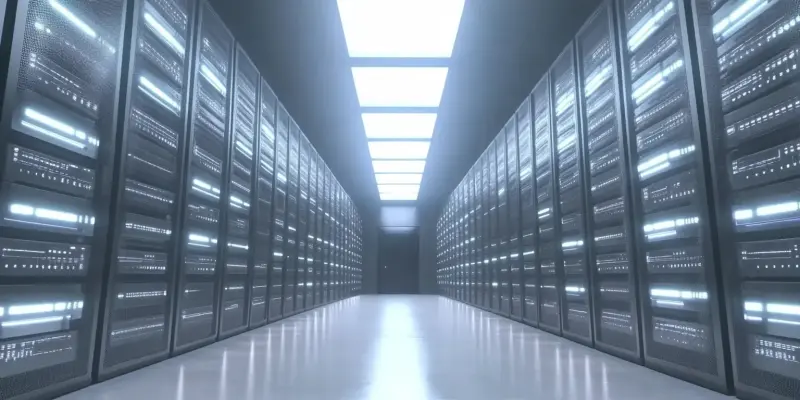The rapid growth of digital infrastructure, encompassing social media, online shopping, and streaming services, has spurred an unprecedented demand for data processing capabilities. This increasing reliance on digital platforms underscores the essential role of data centers in modern society. However, the energy consumption associated with these facilities has resulted in significant environmental drawbacks, including increased power requirements, heat generation, and water shortages due to cooling systems. As a result, the idea of building data centers in space has emerged as an innovative yet challenging solution to address these growing issues.
The Vision of Space-Based Data Centers
Lumen Orbit and the Economic Viability
Innovative companies such as the US-based Lumen Orbit and the EU’s Ascend project are spearheading the exploration of space-based data centers as a solution to terrestrial constraints. These firms have identified the continuous access to solar energy and the natural cooling properties of the vacuum of space as key benefits. By removing the need to navigate local planning permissions and other regulatory obstacles, data centers in space could be rapidly deployed and expanded to meet the increasing demand for data processing.
Lumen Orbit, a trailblazer in this field, recently obtained $11 million in funding to develop a full-scale prototype by 2025. Their focus is on processing data from satellites using AI to reduce bandwidth for transmission to Earth. This approach could markedly decrease the amount of data needing to be sent back to terrestrial networks, thus alleviating some of the existing data bottlenecks. Additionally, Lumen Orbit’s pioneering efforts provide valuable insights into the economic viability of space-based data centers, illustrating that with sufficient investment and technological advancements, these ventures could revolutionize the way we handle data.
Ascend, supported by Thales, has also conducted a comprehensive study that found space-based data centers to be both economically viable and environmentally feasible, provided that carbon emissions from launches can be significantly reduced. Over the next 25 years, Ascend plans to launch a gigawatt of capacity into space, demonstrating a long-term commitment to advancing this innovative solution. This ambitious plan further highlights the potential of space-based data centers to transform the data processing landscape while mitigating the environmental impact of terrestrial data centers.
Technical Challenges and Considerations
Despite the promising prospects, the journey to develop space-based data centers is fraught with significant technical challenges. High launch costs and reliability issues, even with advancements from aerospace companies like SpaceX, might restrict the rapid deployment of these space facilities. While reusable rockets have significantly lowered launch costs, they remain a substantial investment. Consequently, the financial burden associated with launching and maintaining data centers in space could pose a barrier to widespread adoption.
Communication latency between Earth and space presents another challenge, as data transmission speeds are affected by the distance. Although Starlink’s satellite network aims to provide broadband-level speeds comparable to fiber optics, achieving seamless communication remains a work in progress. As companies continue to develop more efficient communication technologies, the goal is to minimize latency and ensure consistent data transmission between Earth and space, facilitating the smooth operation of these extraterrestrial data centers.
Operational and Maintenance Hurdles
Space Weather and Environmental Factors
The operation and maintenance of space-based data centers present unique challenges that differ significantly from their terrestrial counterparts. Space weather, including solar radiation and cosmic rays, poses a constant threat to the functioning of equipment. These environmental factors can cause disruptions and even permanent damage to the sensitive electronics housed in space-based data centers. Advanced shielding materials and robust engineering designs are essential to protect these facilities from radiation and other space weather-related issues.
Debris collisions, another critical risk, are an ever-present concern in the congested environment of Earth’s orbit. Space debris, ranging from tiny fragments to defunct satellites, can cause significant damage upon impact. Efforts to mitigate this risk involve both tracking existing debris to avoid collisions and developing technologies to capture and remove debris from orbit. However, these solutions are still in their early stages and require further development to effectively protect space-based data centers.
Remote Maintenance and Disposal Challenges
Addressing the maintenance of space-based data centers is another complex aspect that requires innovative solutions. Remote maintenance capabilities could potentially mitigate some of these issues, but the feasibility of conducting repairs from Earth remains limited. Advanced robotics and autonomous systems may offer a way to perform maintenance tasks without direct human intervention, yet they are not foolproof. Repair missions to space data centers would be costly and technically demanding, adding another layer of complexity to their operation.
Additionally, the disposal of data center waste in space presents unique challenges. Unlike on Earth, where waste can be managed through recycling and disposal processes, space-based facilities require innovative approaches to handle waste. Solutions such as returning waste to Earth or developing in-situ recycling techniques are being explored, but each option introduces logistical and financial hurdles. Successfully managing waste disposal is crucial to the sustainable operation of space-based data centers.
Anticipating the Future of Space-Based Data Centers
The exponential rise of digital infrastructure, which includes social media, online shopping, and streaming services, has created an unprecedented demand for data processing capabilities. This growing dependence on digital platforms highlights the critical importance of data centers in our modern world. However, the energy consumption of these facilities has led to notable environmental impacts, such as higher power needs, significant heat generation, and increased water use for cooling systems. Consequently, the concept of constructing data centers in space has surfaced as a novel yet challenging approach to mitigate these pressing issues. Despite the hurdles, this idea proposes using space’s vast resources and cold temperatures to address the energy demands and cooling requirements of data centers, potentially offering a sustainable solution to the environmental concerns we face on Earth. The journey to realize this innovative solution will involve complex engineering, substantial investment, and international collaboration, but the potential benefits make it an intriguing possibility worth exploring.

